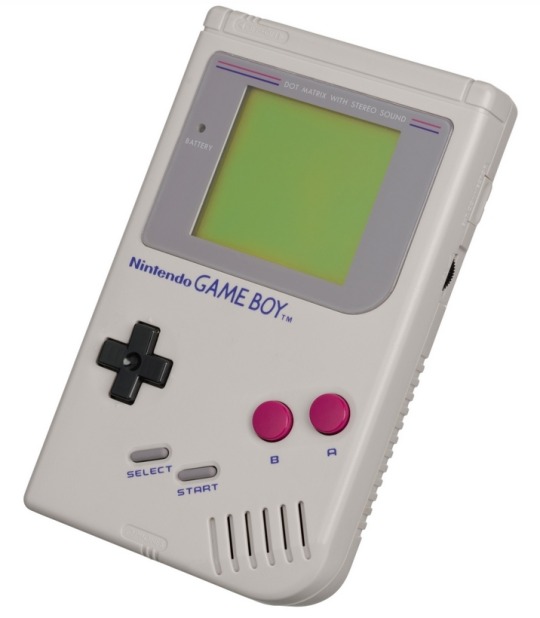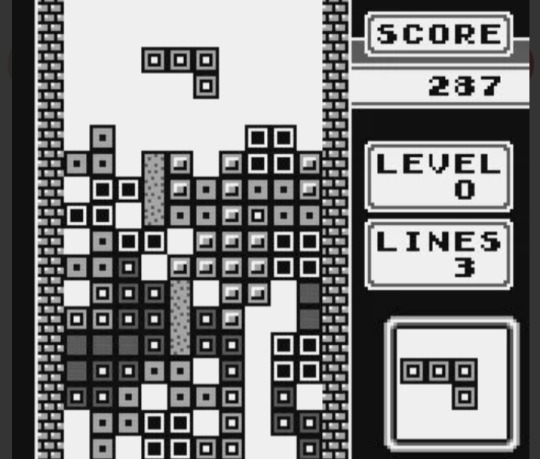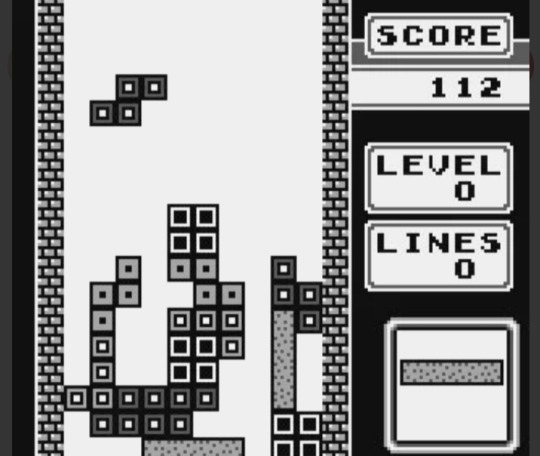#puzzle video game
Explore tagged Tumblr posts
Text


By Sarah Kuta
September 20, 2023
Tetris is one of the world’s best-selling video games and even the subject of a recent film — but the beloved 1980s digital puzzle may also help improve your mental health.
More specifically, psychologists are studying whether playing Tetris can help reduce the number of flashbacks or intrusive memories people have after a traumatic experience, such as sexual assault, a car accident, combat, a natural disaster, or a difficult childbirth.
Most people — roughly 70 percent — have had some traumatic experience in their lives.
But only a small fraction of the population, around 4 percent, will develop post-traumatic stress disorder (PTSD), a diagnosable psychological issue with symptoms ranging from sleep disturbances to self-destructive behaviors.
But whether trauma leads to full-blown PTSD or not, painful memories can spring to mind without warning.
Flashbacks are not only emotionally distressing, but they can also make it difficult to concentrate, which can lead to problems at work or school.
These intrusive memories often pop up as a picture or a short movie in our mind’s eye.
Against this backdrop, British psychologist Emily Holmes wondered if she could reduce the number of flashbacks people had by giving their brains a competing image to focus on shortly after they experienced trauma, while their memories were still forming.
The painful recollection would still exist, it just wouldn’t intrude as often.
“The human mind isn’t like a video camera — it doesn’t just immediately record everything we’ve experienced,” says Emily Holmes, a psychology professor at Karolinska Institutet and Uppsala University in Sweden.
“It actually takes some time, possibly hours, before a memory gets solidified into mind. What we were interested in was: Is there something we can do as the memory is still consolidating that would help it not become a flashback?”

A ‘cognitive vaccine’
Her team began testing an array of visuospatial tasks that involve generating or manipulating images in the mind’s eye, such as imagining a constellation or tapping out a complex pattern.
One day, a student suggested they try a video game — and Tetris became the obvious answer.
“It involves colors, it involves space because you’re having to move blocks around to complete lines and, critically, it requires you to rotate the shapes in your mind’s eye,” Holmes says.
“You really have to use your mental imagery skills because you’re trying to fit the blocks into the right place.”
They started to experiment with Tetris — first, in the lab, by showing participants a traumatic film and, later, in the real world, by meeting with people in hospital emergency departments who’d just been in car accidents.
In both settings, people who played Tetris within hours of the trauma experienced significantly fewer flashbacks over the course of the next week compared to those who didn’t.
(58 percent fewer in the film study, and 62 percent fewer in the car accident study)
Based on the promising results of this proactive, preventative approach — which Holmes describes as being like a “cognitive vaccine” — they next turned their attention to established memories.
“The reality is, we’re not going to be able to get to most people within a few hours of a traumatic event occurring,” she says.
“People can have intrusive memories for years or decades, so clearly we need to do something for those older memories.”
In one study, Holmes’ team asked people receiving treatment for PTSD to focus on a specific flashback while playing Tetris for 25 minutes once a week for several weeks.
By the end of the experiment, participants saw a 64 percent reduction in the number of times that specific memory popped up, as well as an 11 percent reduction in memories they hadn’t targeted.

In another study, they worked with intensive care unit nurses who had established intrusive memories — including many that were more than three months old — of traumatic events from the COVID-19 pandemic.
After four weeks, nurses who played Tetris experienced one-tenth the number of intrusive memories compared to those who did not play.
They also reported improvements in other symptoms, such as insomnia, anxiety, and depression.
Overall, nurses who played Tetris saw a 73 to 78 percent reduction in flashbacks.
As Holmes points out, there’s probably nothing special about Tetris specifically.
She suspects any task with high visuospatial demands — like drawing, doing a jigsaw puzzle, or making mosaics — might achieve similar results.
However, tasks that are verbally distracting, like doing a crossword or reading, probably wouldn’t work as well.

Tetris as a coping tool
Importantly, in their experiments, researchers aren’t just handing over a Game Boy and telling people to start playing Tetris.
Rather, they first ask participants to call to mind a particularly bad piece of a memory, called a hotspot.
Then, during gameplay, they instruct patients to mentally rotate the shapes, called tetrominoes, in their mind’s eye before they fall into the field of play.
They also ensure participants play Tetris for a sufficient length of time, usually between 10 and 20 minutes.
So far, all of their work has involved this procedure, which the researchers suspect is important to achieving results.
“Historically, intrusive memories of trauma are quite difficult to treat because they’re stuck in your mind for a reason — your brain’s gone into red alert and is trying to keep you safe,” says Holmes.
“They’re just really tricky things to alter. So if you’re just playing a game, it may help take your mind off things or reduce distress, but it might not help stop the flashbacks from intruding in the future.”
Still, playing Tetris on your own, without following the research procedure, likely won’t hurt you — and it may even help you feel better.
Canadian therapist Morgan Pomells recommends it to her clients as a coping tool for soothing feelings of anxiety or hyperarousal.
She doesn’t use Tetris during therapy sessions but, rather, suggests it as a potential option for moments when distressing memories or mental images arise during daily life.
“It’s one of the tools in the toolbox,” she says.
“A lot of people find it to be really helpful, especially people who have a really visual element to some of the symptoms they experience.
Turning to Tetris and being able to really sink into that game, even just for a couple minutes, allows them to feel a little safer and it really quiets their minds.
And when they resurface, they’re in a calmer state and actually able to take stock of their surroundings.”
However, Pomells cautions, Tetris or any other type of coping tool is not a substitute for seeing a therapist.
Holmes echoes that sentiment, adding that people who are suffering from flashbacks should first seek evidence-based treatment from a healthcare provider.
While Tetris may eventually become an evidence-based treatment itself, right now, researchers are still in the early stages of gathering clinical evidence.
“This is more of a journey of curiosity,” says Holmes.
Additional clinical studies are underway now. In the future, researchers also hope to test the long-term effects of Tetris on flashbacks, as well as understand what’s actually happening in the brain.
More broadly, they want to see if Tetris is effective at reducing intrusive memories related to other conditions beyond trauma, such as substance abuse disorders and depression.
“Mental images can haunt people in a variety of forms and I think it’s a real scientific challenge of the future,” says Holmes.
“It’s like being a physicist some centuries ago. We’ve just started to see the stars and planets, now we’ve got to go explore them.”

Tetris is a puzzle video game created in 1985 by Alexey Pajitnov, a Soviet software engineer.
It has been published by several companies for multiple platforms, most prominently during a dispute over the appropriation of the rights in the late 1980s.
After a significant period of publication by Nintendo, the rights reverted to Pajitnov in 1996, who co-founded the Tetris Company with Henk Rogers to manage licensing.
—
Alexey Leonidovich Pajitnov (born April 16, 1955) is a Russian computer engineer and video game designer who is best known for creating, designing, and developing Tetris in 1985 while working at the Dorodnitsyn Computing Centre under the Academy of Sciences of the Soviet Union (now the Russian Academy of Sciences).
#Tetris#video games#mental health#mental heath awareness#mental heath support#1980s#80s#20th century#digital puzzle#traumatic experience#trauma#post-traumatic stress disorder (PTSD)#PTSD#flashbacks#memories#psychology#cognitive vaccine#Game Boy#Alexey Pajitnov#puzzle video game#Nintendo#Tetris Company#Alexey Leonidovich Pajitnov
13 notes
·
View notes
Text
I am a solo indie dev trying to overcome my anxiety and actually let people know my game exists. It is a cute physics based game where you are the level.
I love making this game with passion and I am so excited to share it with the world, but somehow I need to let the world know. Unfortunately the way steam works is the more wishlists the more visibility, so if you are interested it is super appreciated :)
Wishlist on steam or visit the website to find out more mightymarbles.com
#video games#gamedev#indie games#indiedev#unity3d#game development#indiegamedev#puzzle#puzzle games#rube goldberg#mini golf#marble run#marbles
33K notes
·
View notes
Video
tumblr
Viewfinder is a mind-blowing perspective-based puzzle adventure that does things you won't believe are possible!
Read More & Play the Beta Demo, Free (Steam)
#Gaming#indie games#pc games#pc gaming#indie game#pc game#video games#puzzles#puzzle games#indie gaming
30K notes
·
View notes
Text
I've discovered that I can solve logic puzzles like nonograms and word searches not only faster, but with a demonstrably lower error rate as well, by putting video game boss music on in the background, which I'm pretty sure proves human cognition is bullshit.
2K notes
·
View notes
Text
please play Phantasmagoria 2: A Puzzle of Flesh please i'm begging you
#fmv games#video#gaming#sierra games#retro gaming#pc gaming#phantasmagoria 2#a puzzle of flesh#comedy#humor#bela lugosi#gay#trevor barnes#point and click adventure#late night scout
247 notes
·
View notes
Text

The Art of Alice: Madness Returns
#the art of Alice madness returns#alice madness returns#art#concept art#horror#horror games#puzzle games#video games#alice liddell#alice in wonderland#through the looking glass#asylum#gothic#goth#steampunk#american mcgee's alice
263 notes
·
View notes
Text

Silent Hill, 1999
#video games#playstation#90s video games#playstation 1#ps1#silent hill#silent hill 1#harry mason#survival#horror#action#psychological horror games#psycological horror#survival horror#puzzle games#konami#ps1 graphics#ps1 games#psv#ps vita#playstation vita#ps3#ps3 games#playstation 3#lisa garland#action adventure#harry silent hill#harry mason silent hill#sh1#2000s video games
382 notes
·
View notes
Photo

Pokémon Puzzle Challenge GBC Cartridge (2000) [✩]
#pokemon#pkmn#pokemon puzzle challenge#pokemon puzzle#puzzle#challenge#gameboy color#gbc#gameboy cartridge#cartridge#nintendo#game freak#video game#video games#vg#pikachu#pichu#japan#japanese#nostalgia#2000#2000s#2000s nostalgia#2000s tech#2000s technology#tech#technology#mp
2K notes
·
View notes
Text

I love puzzle games
1K notes
·
View notes
Text
As much as I love the thought of Levi having to do the older sibling "Just hand me the controller!" move to Satan and co. when they get stuck in a game, I find the idea of Mammon doing it to him even more hilarious. Especially if Mammon actually figures it all out and does it flawlessly while Levi's gnawing his tail in fury.
Bonus points if Lucifer does that Dad thing to Levi too where he's been stuck on a level for hours, Lucifer watches him play for like .5 seconds, then figures out the puzzle immediately without even understanding the "intimate details" of the game mechanics like any good otaku should.
#mammon makes him pay get the controller back#or he exits the game without saving after he fixed it#lucifer doesnt get video games#but he does get logic puzzles#chastizes levi for bad common sense#obey me#obey me shall we date#shall-we-date-obey-me#obey me leviathan#obey me lucifer#obey me mammon#obey me headcanons
1K notes
·
View notes
Text

Requested by anon
121 notes
·
View notes
Text
Sound on! Yesterday I posted this and you gave me feedback to improve it. So here is the new improved version!
I am a solo hobby dev from Australia making Mighty Marbles - a physics based marble game where you are the level. There is music in the game too but I turned it off so the SFX was clear!
Yesterday I posed this and got feedback the marble on plastic sounded a bit too much of a thud and the siren for the copter was a bit much so I tried to fix. Did I make it better?
If you want to find out more visit the steam page or web site. As a small indie every wishlist helps me get some visibility on steam!
#video games#gamedev#indie games#indiedev#unity3d#game development#indiegamedev#puzzle#puzzle games#rube goldberg#nintendo switch#steam games#physics#casual gameplay
2K notes
·
View notes
Text

Yu-Gi-Oh! Monster Capsule GB Gameboy Color 2000
#gaming#video games#retro gaming#nostalgia#aesthetic#pixel art#nintendo#konami#ygo#yugioh#ygo dm#yugioh dm#yu gi oh#yugioh duel monsters#duel monsters#y2k#2000#gameboy#gameboy color#gbc#yugi mutou#seto kaiba#joey wheeler#ryou bakura#millennium items#chibi#millennium puzzle#hypnotic
91 notes
·
View notes
Text
Limbo style atmospheric puzzle-platformer about a little red-haired girl where the obligatory surreal brainfuck powerup sequence that changes up the puzzle formula in the final act gives you an air dash.
#concepts#gaming#video games#tropes#swearing#pixel-art precision puzzle platformers starring red-haired women who can air dash
1K notes
·
View notes
Text
I was on a boss level of a video game where the boss was a computer and various other electronics were moving around on a sort of trolley that was of human height. It wasn’t clear if the boss was inside the robot trolley or if it was being controlled remotely. The arena was a fairly small white room with a column of computer stuff in the middle.
When it became clear that the boss could not be defeated I realised that it was necessary to first complete an IRL puzzle that was kinda like a padlock but had loads of vertical and horizontal metal cylinders in it. You could only complete the padlock puzzle if you took a coin out of it and put the coin into various slots around this river in the middle of a town I’ve never been to.
Me and a few friends had to climb over walls and try not to fall into the river whilst putting the coin into the slots in the walls. The coin would always come back out because it somehow saved where it had been and could update the padlock puzzle.
Even when the coin had been everywhere it needed to go the puzzle still wasn’t unlocked, but one of my friends figured out how to open the back which gave you access to the cylinders and the ability to move them at will.
Although we cheated to open the padlock puzzle, I assumed that I could now defeat the computer trolley boss, but I never found out if I was right.
349 notes
·
View notes
Text

The Art of Alice: Madness Returns
#the art of alice madness returns#american mcgee's alice#art of alice madness returns#alice madness returns#alice in wonderland#alice liddell#through the looking glass#aesthetic#gothic#steampunk#horror#puzzle game#video games#Xbox#concept art#art
163 notes
·
View notes